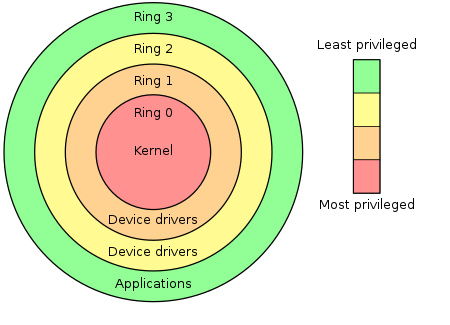The kernel is a critical component of every operating system, without which no process can run on your machine. It is in charge of important activities such as memory management, process management, I/O management, network management, and so on. Kernel architectures are available in a variety of configurations on the market. Their components, however, are either directly or indirectly the same.
In this article, we will go through the components and architecture of a kernel, as well as the advantages and disadvantages of each architecture.
What is a Kernel? Responsibilities of Kernel Architecture
The kernel is an important component of the operating system that interacts with the hardware. The kernel is the program that reads data from the disc and accesses memory or any other device attached to the system. It controls the running processes, allocating memory and other resources to them.
Moreover, the kernel comprises all of the scheduling algorithms that are in charge of allocating CPU to each task in the most effective way possible. It has complete access to the hardware, and the Operating System must communicate with the kernel via system calls for each job. The Linux kernel is a popular example of a kernel that is frequently utilized in development scenarios.
Responsibilities of a Kernel
- Process management
- Device management
- Memory management
- Interrupt handling
- I/O communication
- File system
How the Kernel Architecture is related to Operating System
A kernel acts as a middleman between software and hardware. A kernel serves as the foundation for an operating system. Every operating system requires some kind of channel to communicate the software it offers with the hardware. This is when the kernel comes into action.
Linux is a kind of kernel. Operating Systems such as Ubuntu, Arch, Mint, Debian , and others are based on the Linux kernel but have distinct user interfaces and serve diverse functions.

Components of a Kernel
Virtual Memory Manager:
Responsible for managing virtual and physical address spaces and paging algorithms. This is an important part of processing as the CPU requests for the pages inside the RAM through this approach.
Memory Manager
This part controls the allocation of processes to the main memory. The modern approach for memory management is dividing the memory into frames and keeping the same-sized pages in these frames.
Process Manager
Responsible for creating, deleting, and managing the processes and threads.
Abstract Network Service Manager
This part is responsible for managing network connections, including sockets, ethernet, etc., with the machine.
Kernel Architectures
Architecture 1: The Microkernel
The kernel is divided into distinct sections known as servers in Microkernels. Some servers run in kernel space, while others run in userspace. Each server is kept independent and runs in a different address space.
Message passing is used for communication in microkernels. IPC ( Interprocess Communication ) is used by the servers to interact with one another. Servers communicate with one another to request "services." The separation provides the advantage that if one server fails, the other server can still function properly.
Examples of microkernel-based operating systems include Mac OS X and Windows NT . They are typically seen as tiny and "safe" since there is less possibility of information being unintentionally jumbled between subsystems.
Advantages
- Adding a new service does not need kernel modification.
- It is more secure since more actions are performed in user mode rather than kernel mode.
- A more dependable operating system is usually the consequence of a simpler kernel architecture and functionality.
Disadvantages
- Overheads incurred as a result of inter-process communication.
- Frequent use of the operating system's messaging features to allow the user process and the system service to interact.
Architecture 2: The Monolithic Kernel
In this kernel, every basic system service, such as process and memory management, interrupt handling and I/O communication, file system, and so on, is performed in the kernel space . It specifies a high-level virtual interface over hardware. It is designed in layers, beginning with basic process management and progressing through interfaces to the rest of the operating system, including user applications.
UNIX kernels , DOS , OpenVMS , and other monolithic kernels are examples of monolithic kernels.
Advantages
- We can perform different management tasks using system calls
- There is one large thread that handles all the operations running inside the machine.
Disadvantages
- The kernel size expands.
- Lack of extensibility.
- If one service fails, the entire kernel space fails.
How is Microkernel Architecture different from Monolithic?
- The key difference between a microkernel and a monolithic kernel is that a microkernel implements user services and kernel services in separate address spaces, whereas a monolithic kernel implements both user services and kernel services in the same address space.
- Because only kernel services exist in the kernel address space, the microkernel is small in size. However, the size of a monolithic kernel is greater than that of a microkernel since kernel and user services share the same address space.
- Microkernel architecture is more secure than monolithic architecture since a failure in service does not cause the entire system to crash, as is the case with the monolithic kernel.
Architecture 3: The Hybrid Kernel
The goal of the Hybrid Kernel is to combine the advantages of Monolithic and Microkernel. The structure and design of this approach are Microkernel based, while the implementation of Microkernel architecture is done using Monolithic architecture.
These kernels are often found on desktop computers, as well as Windows, Mac, and various Linux OS variants.
Advantages
- It is stable because the rest of the services do not crash even if a service goes down.
- It is reliable as reliable
Disadvantages
- Unable to load modules at runtime
Conclusion
This article went through the major kernel architectures. We also talked about the various components found within the kernel. The kernel adheres to many architecture designs that are employed for various use cases. We also have a hybrid architectural method that combines the capabilities of several architectures. You should now understand the functioning principles of each architecture and be able to select one based on your needs.
People are also reading:





Leave a Comment on this Post